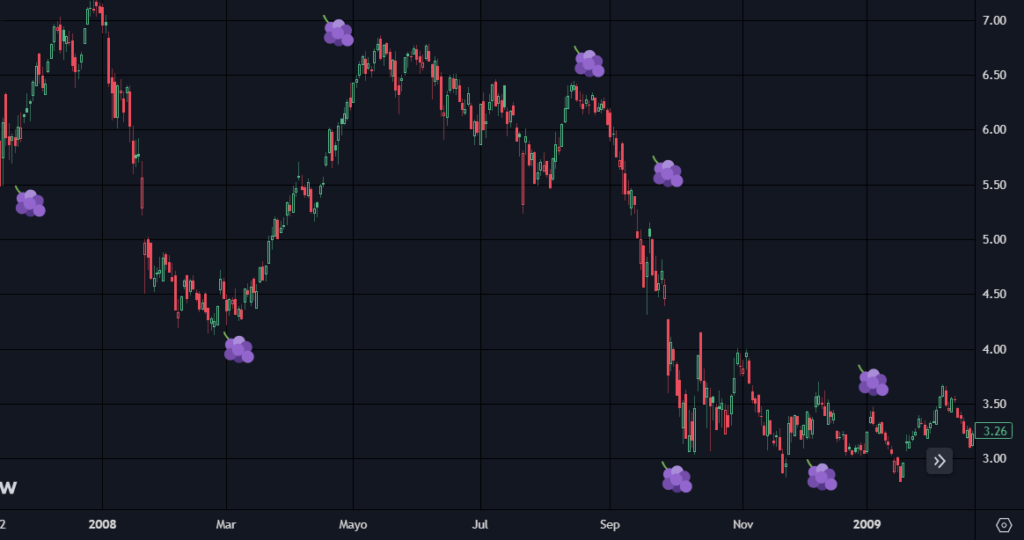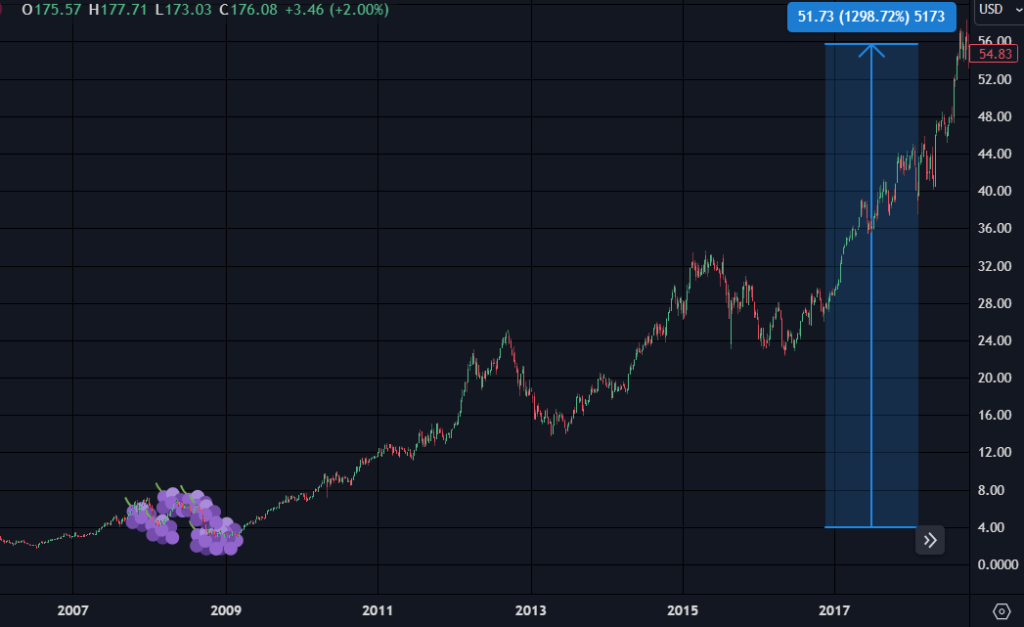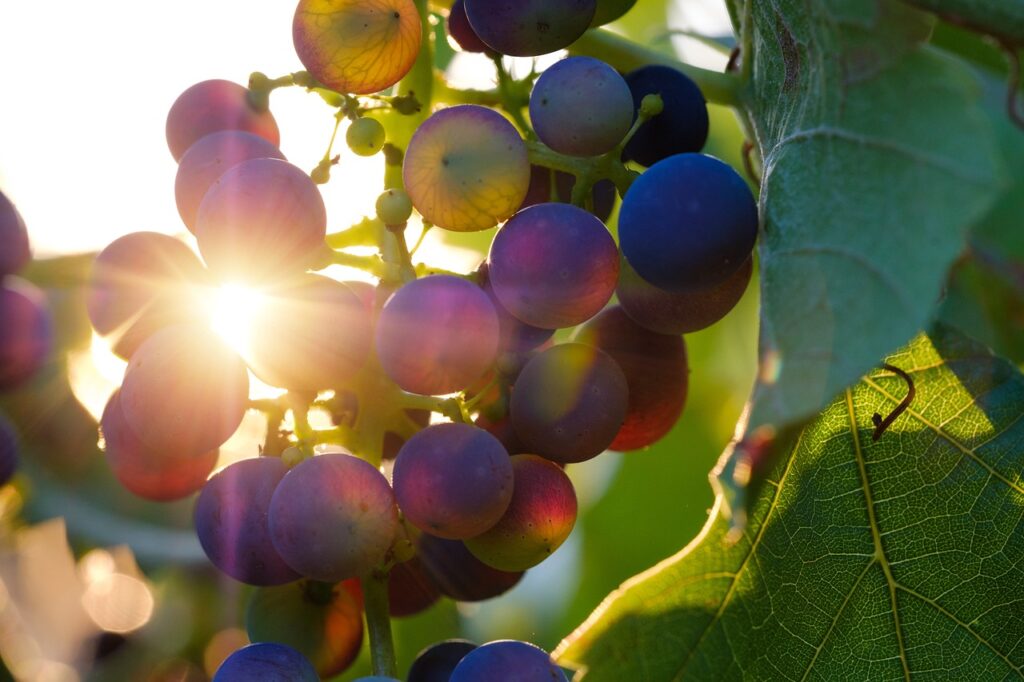I feel there is a need to make an actionable plan for most people who are new to investing.
There is a lot of noise over the internet, with many people claiming to make easy money, everybody selling something, everybody with different opinions.
If that wasn’t enough, finance can get really complex if we start to take into consideration macroeconomics with interest rates, commodity prices, inflation rates, fundamentals, stock technical analysis, stock to flow, financial ratios, leverage, financial derivatives, etc.
It can really confuse and lead to wrong ways for people who are just starting out. In the end, simplicity will beat complexity in the investing game. That’s why I’ll teach you an investing strategy that can help you out.
The Grape Harvesting Investing Strategy
This strategy is very simple. It consists of first selecting a quality asset. What do I mean by that?
I mean an asset you have previously researched and believe has high growth potential. That, in turn, will lead you to develop your investment thesis.
After selecting the asset, just like grapes, you will start “picking up” that asset and putting it in your “basket”.
This means you will start to accumulate as much as you can. You will let those grapes mature and then sell them as a delicious wine.
That’s it! Simple, right?
Well, in reality, it’s pretty simple. So why don’t most people do it?
Let’s see how this strategy would work out in real-time.
Suppose it’s the year 2008. We notice that there are these new products that people are using, and it also appears to be a pretty awesome product to you. It’s called the iPhone.
It’s not the first time you’ve seen a product from this company; you already knew the iPod, but still weren’t paying much attention. Then BlackBerry was basically the dominant player. Most people were saying Apple would never be able to beat them.
Right there is one of the first challenges of any investor: Learning to think on their own, dispersing any fear, uncertainty, and doubt that is constantly pushed by the media and other investors all the time.
So after researching a little more about their products, envisioning what the company will be in a couple of years into the future, reading more about it, and convincing yourself that it has the potential to disrupt all competitors, you decide to start investing.
This part is very important; it is where you develop your investment thesis, and as long as it doesn’t change, your conviction should remain intact. This would also be the equivalent of picking up the “best grapes”, not just any kind.
Then we are going to see Apple stock $AAPL as our grapes. What we want to do is accumulate as much of those grapes into our “basket” (portfolio) as we can.
Meaning we are just going to be buying without care for the price in the short term. If it goes up or down, we don’t care. We can even say that if it drops a lot in price but our thesis hasn’t changed, we will accumulate more.
If we see a chart of the price, it would look something like this. All the grapes are points and prices at which we bought!

As you can see, we collect our grapes at different times and different prices. This is basically the strategy known as “Dollar Cost Average” (DCA), so we aren’t very worried about buying at a specific price.
Then let’s say we have already accumulated enough of Apple stock in our basket.
What’s the next step?
Well, we just wait. Here, we need patience to let the investment thesis play out and allow the stock price to grow higher.
Just as with grapes, now that our basket is full, we no longer have to do anything but wait for those grapes to mature.
This is also where things get tricky.
Along the way, there will be news from the media saying Apple is in trouble, that the stock is down 30% because China is having problems with the US, that it would be best to sell now and wait for circumstances to change before buying again, etc.
We don’t pay absolutely any attention to that at all. We just hang on tight to our “grapes”.
Merely waiting is the process in which we make the most money, but it comes counterintuitive to our nature.
We don’t just wait to sell for a quick profit; if we chose the correct asset, we don’t need to sell our grapes. Even after a 100-200% increase, we can let them mature even more and maybe decide to sell it for a higher premium by making wine. That would mean returns of 1,000% +.
Let’s see what happened a couple of years after our grape accumulation spree.

After 10 years, our investment has grown by over 1,000%. That means a $100,000 investment would now be worth over $1,000,000.
This calculation assumes that we never added more funds to our investment. However, we could have continued to buy and accumulate more “grapes” into our “basket” over those years, potentially increasing the final amount even more.
Think about it: While the media is shouting about buying and selling various assets, interest rates are going up, and the economy is facing challenges.
Your social media influencer might be suggesting ways to make a quick $5k from home and other such distractions. But you silence the noise, stick to your strategy, and make a killing in the market.
It’s a simple strategy, but the noise from the media, markets, and other investors often makes it difficult to stick to.
That’s why it’s important to develop your own thesis and have conviction in it.
As for diversification? Should you just go all in one basket?
Well, my answer would be no. It’s definitely a good idea to have 1-4 baskets, but the Grape Harvesting Strategy remains the same for each of them.
This isn’t my only investing strategy, but I definitely think it’s one of the most powerful ones.
Take care,
Zifush.

